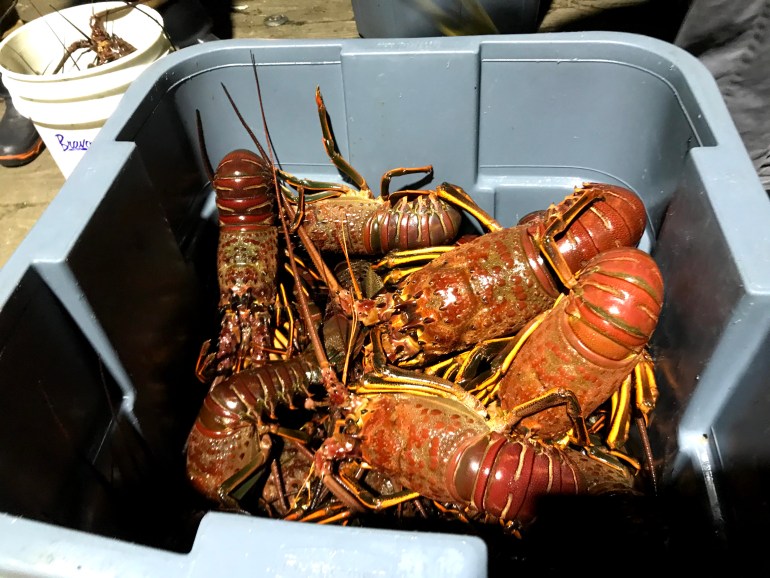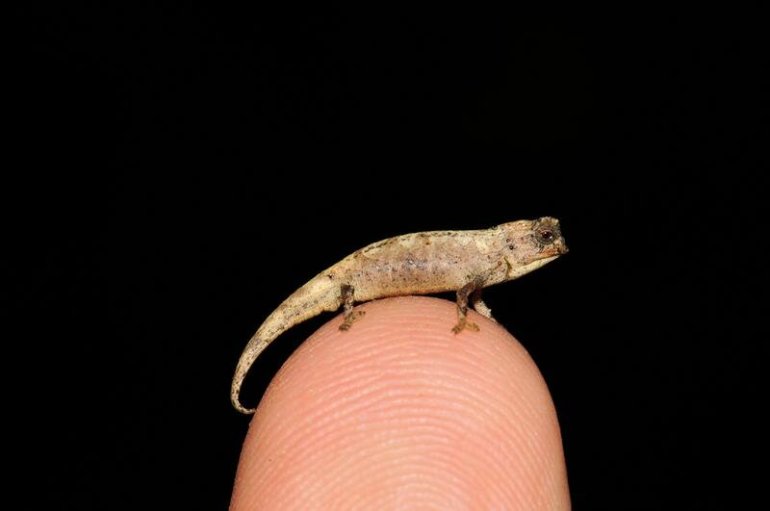Stimulus cheques,Reddit frenzyand an extremely tiny chameleon
Happy Friday! If you’re in the Northern Hemisphere or just happen to be an international groundhog fan, you might already know we’re in for six more weeks of winter.
That frigid weather gives you plenty of time to catch up on the biggest business and economic news stories you might have missed. Oh, and if you’re reading this in a sunny, warm locale, please don’t rub it in, mmmkay?
$1,400
The amount of cold, hard cash that US President Joe Biden wants to give Americans to help them weather the COVID-19 crisis.
Biden has proposed sending $1,400 cheques to each qualifying person — including children and adult dependents — in the hopes they will go out and stimulate the economy. How? By buying stuff, because consumer spending drives some two-thirds of US economic growth.
But researchers at the University of Pennsylvania aren’t so sure. They used the Penn Wharton Budget Model to analyse Biden’s plan. Their findings suggest that 73 percent of the direct cash transfer would go directly to household savings instead of purchases of goods and services.
But people earning the least stand to benefit the most from the cheques. According to the Penn Wharton model, 99 percent of households in the bottom 80 percent of incomes — including 100 percent of households in the bottom 40 percent — would qualify for direct aid including stimulus cheques, an expansion of the child tax credit and or an expansion of the earned income tax credit.
For people in the bottom 20 percent of the income distribution, say Penn Wharton researchers, stimulus cheques combined with the tax credit expansions “would boost after-tax incomes by over 50 percent”, which is a huge impact.
$480.43
The wild gap between the high and low share price GameStop reached over the past year. The video game retailer has seen its stock trade as low as $2.57 per share. But recently, its share price soared to $483 thanks to an army of Reddit-reading day traders bent on sticking it to Wall Street hedge funds.
Al Jazeera’s Ben Piven profiled one of those day traders, Reza Nader, who pressed pause on his acting dreams to return to his late-90s stock-trading roots — without the big firm to back him.
“Nader sleeps just four hours each night, watches financial news on CNBC around the clock and chain-smokes packs of cigarettes. With little else to do, his universe is the stock market and the thousands of largely middle-class followers who he advises under the name Sorrybud,” Piven writes.
Nader said some of his social media followers are using their stimulus cheques to try their hand at investing, or hoping to get rich after losing their jobs. But, he told Al Jazeera, many are in the game right now just because it is fun.
“There’s no difference between stocks and Pokemon,” he joked.
But as the Reddit investor army tries to catch ’em all, US officials are eager to understand how the whole GameStop frenzy got so crazy so fast.
For her part, Treasury Secretary Janet Yellen said she and other regulators need to “understand deeply” what happened before taking any action to potentially reign it in.
2.2 trillion
The amount in rupees (equivalent to $30.20bn) that India is budgeting for healthcare in the upcoming financial year, in addition to 350 billion rupees ($4.81bn) for COVID-19 vaccines.
India’s annual budget, which was unveiled on Monday, had plenty of surprises for analysts. The biggest one? That the country is willing to spend big time to dig itself out of the COVID-19 recession even if that involves racking up more debt.
“The outlays are bigger than expected. Moreover, unlike with past budgets, the government is not trying to pay for it by increasing taxes,” writes Al Jazeera’s Megha Bahree. So where is all that cash going, and does India’s big spending raise any red flags? Check out our explainer here.
 California lobster fisherman have seen prices soar to record highs as a trade war between China and Australia drives up demand for the spiny US crustaceans with Chinese diners who view them as a delicacy [Credit: Brian Osgood/Al Jazeera]
California lobster fisherman have seen prices soar to record highs as a trade war between China and Australia drives up demand for the spiny US crustaceans with Chinese diners who view them as a delicacy [Credit: Brian Osgood/Al Jazeera]$40
The sky-high price per pound that California spiny lobster has fetched this year, Santa Barbara seafood distributors told Al Jazeera, marking a record. But the notoriously volatile price of the crustacean also hit $8 per pound recently, making for price swings wilder than the ocean waves themselves. Like what we did there?
“The economic interconnection between California’s lobster fishermen and markets in China, where the spiny crustaceans are popular with the country’s growing middle class as a symbol of status and good fortune, comes as a double-edged sword,” writes Al Jazeera’s Brian Osgood.
In 2019, Trump’s trade war with China hurt sales, and the 2020 coronavirus pandemic made accessing Chinese markets tough.
More recently, China’s trade war with Australia — which also exports lobster — has been good for California fishermen. But between trade spats, stormy weather and fluctuations in local demand, lobster fishers and distributors never quite know if they’re going to have a boom or bust season.
That’s why “smart fishermen put away money in the good times so they can weather the bad times,” Chris Voss, president of the Commercial Fishermen of Santa Barbara, told Al Jazeera. “This is an expensive industry, and there are a lot of ups and downs. The one thing we know for sure is that the good times don’t last forever.”
You can say that again.
22 millimetres
The length from nose to tail of a newly discovered species of chameleon, which makes it about the size of a sunflower seed.
 The nano-chameleon does not look impressed with you, humans [File: Frank Glaw/EndangeReX via Reuters]
The nano-chameleon does not look impressed with you, humans [File: Frank Glaw/EndangeReX via Reuters]Scientists from Germany and Madagascar discovered the Brookesia nana, or nano-chameleon, in the northern part of the African island nation and believe it to be the smallest of the 11,500 known reptile species in the world.
At just under 22mm, the male of the species is smaller than the female, which measures about 29mm from nose to tail.
So far, researchers at the Bavarian State Collection of Zoology in Munich were only able to discover one pair “despite great effort”, Reuters news agency reported.
We’re sure that’s true. After all, finding more would be like finding a chameleon in a haystack.
Source: Thanks AlJazeera.com